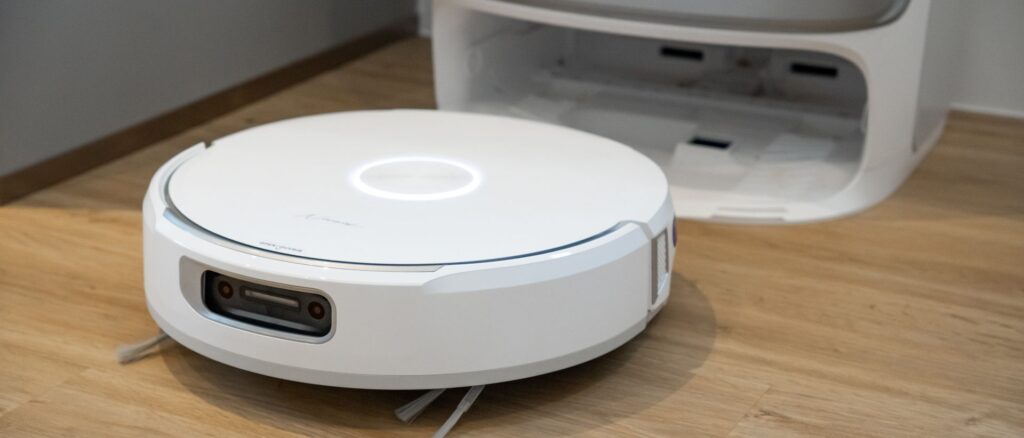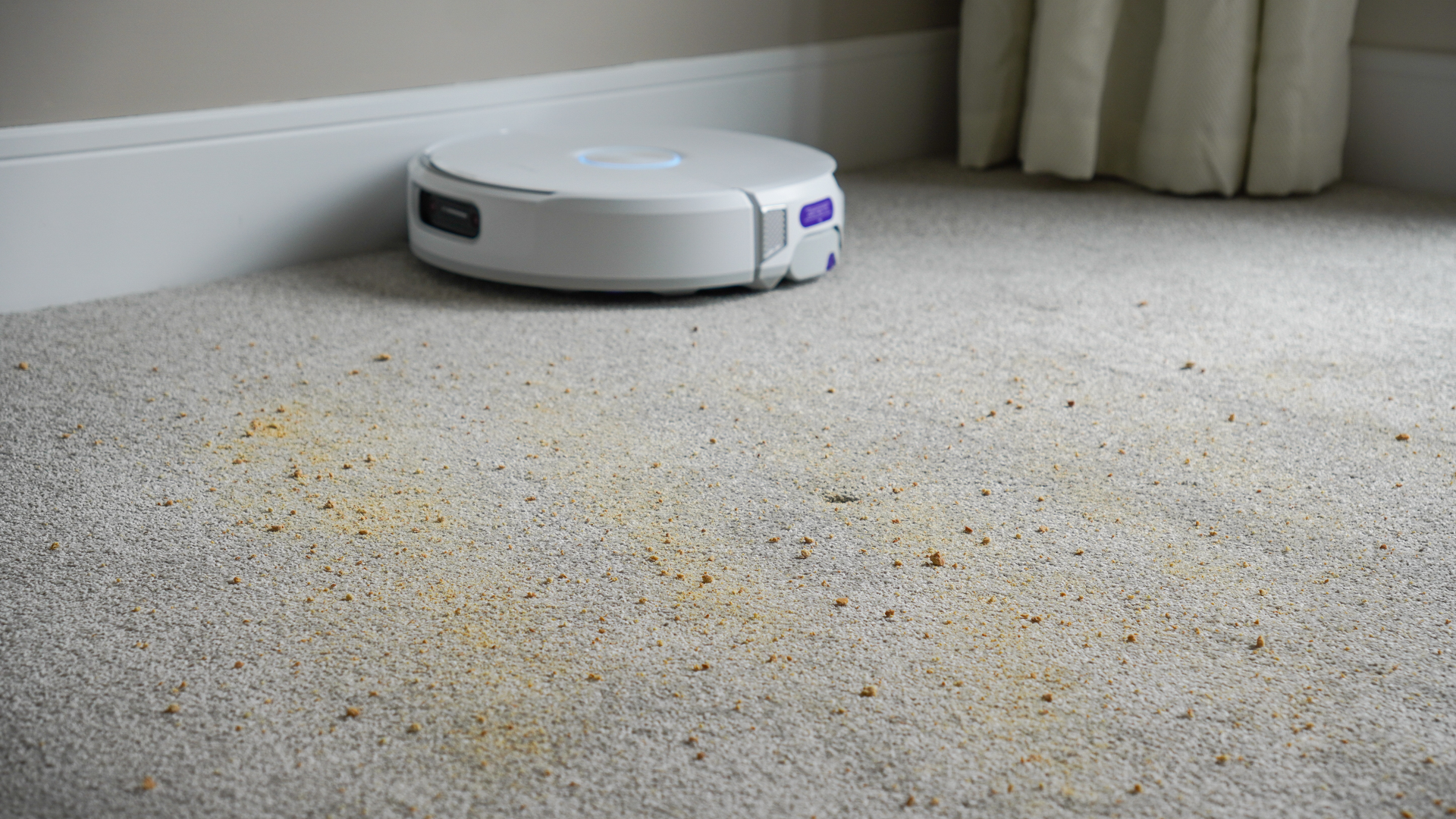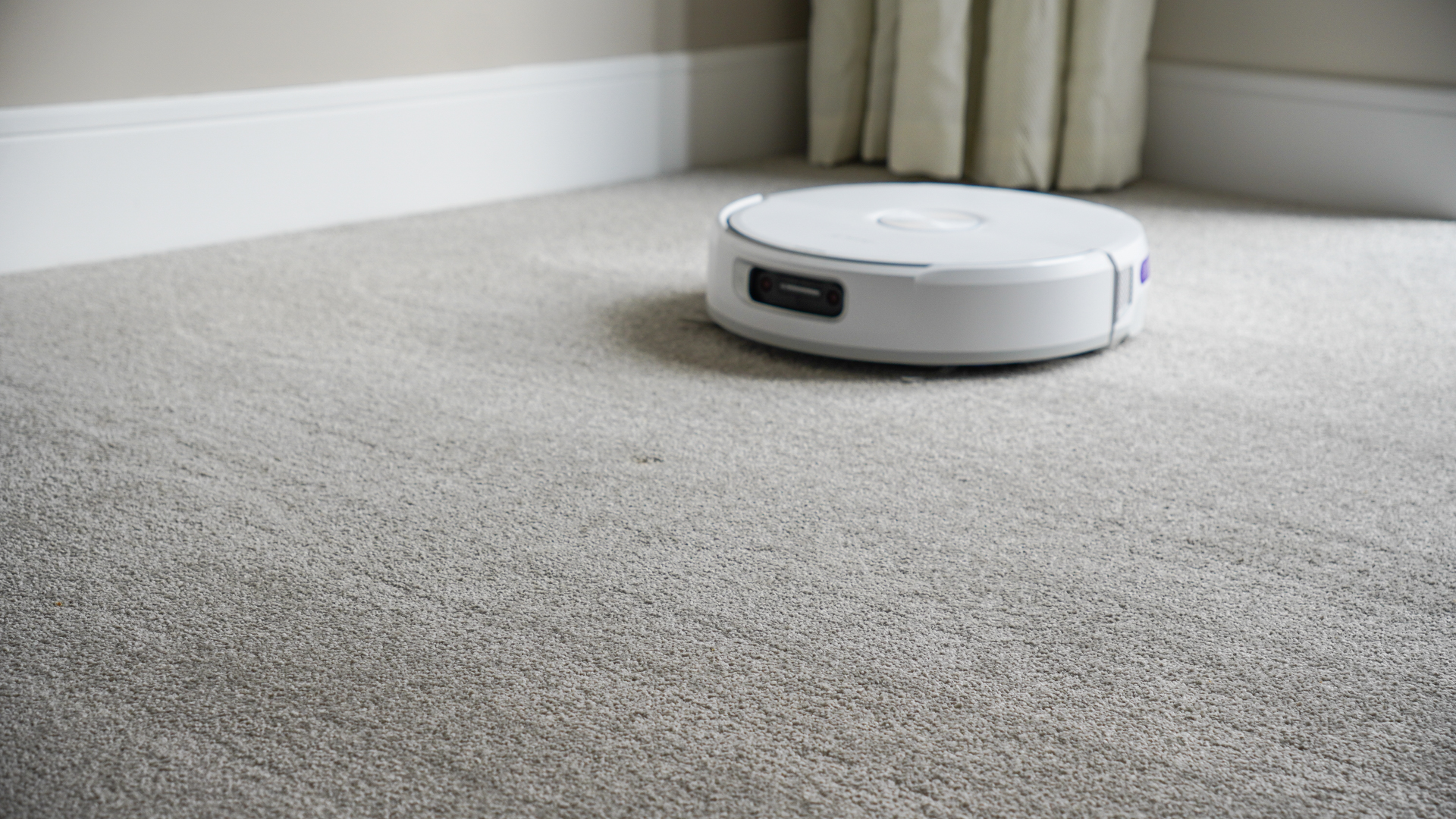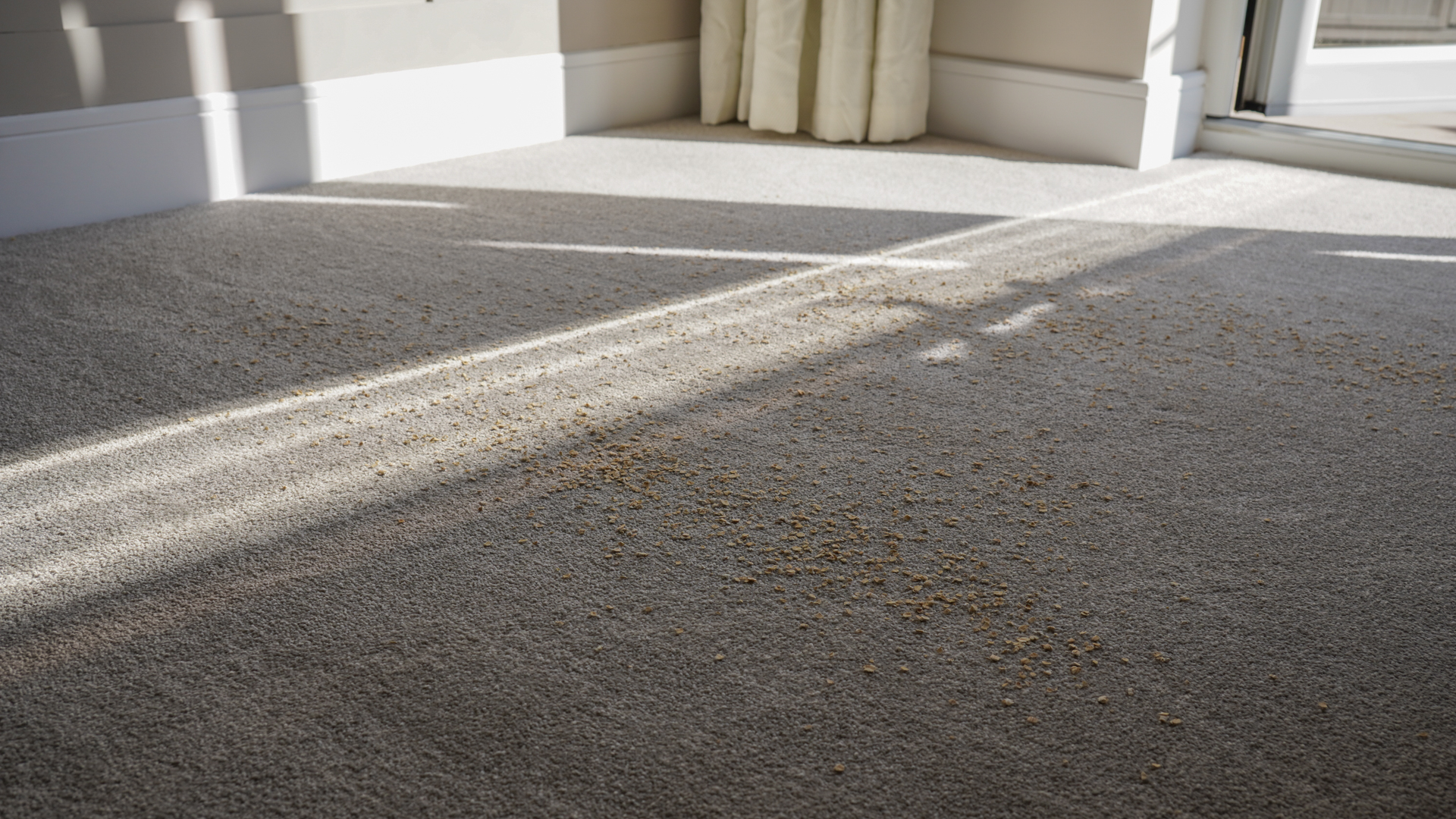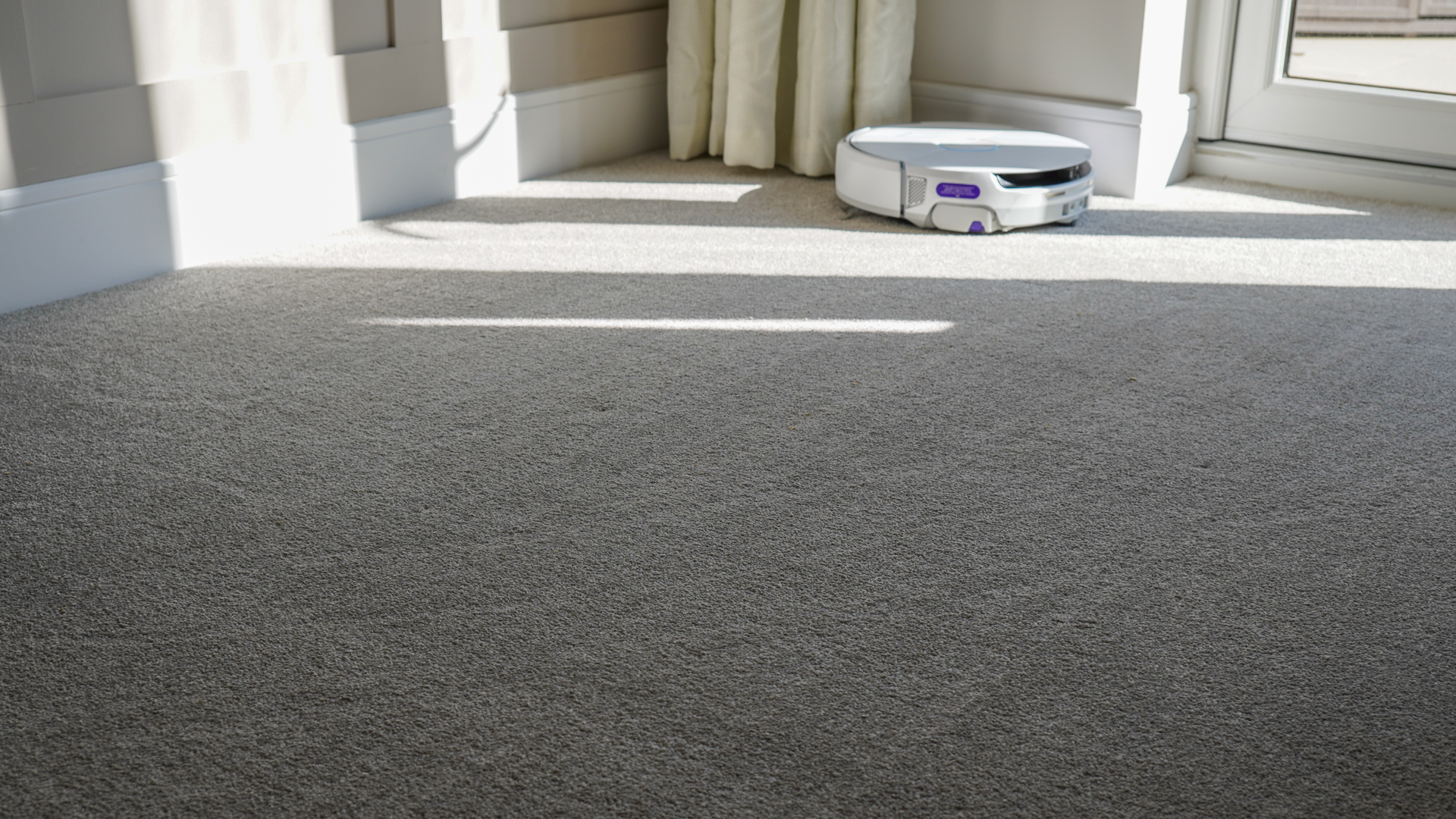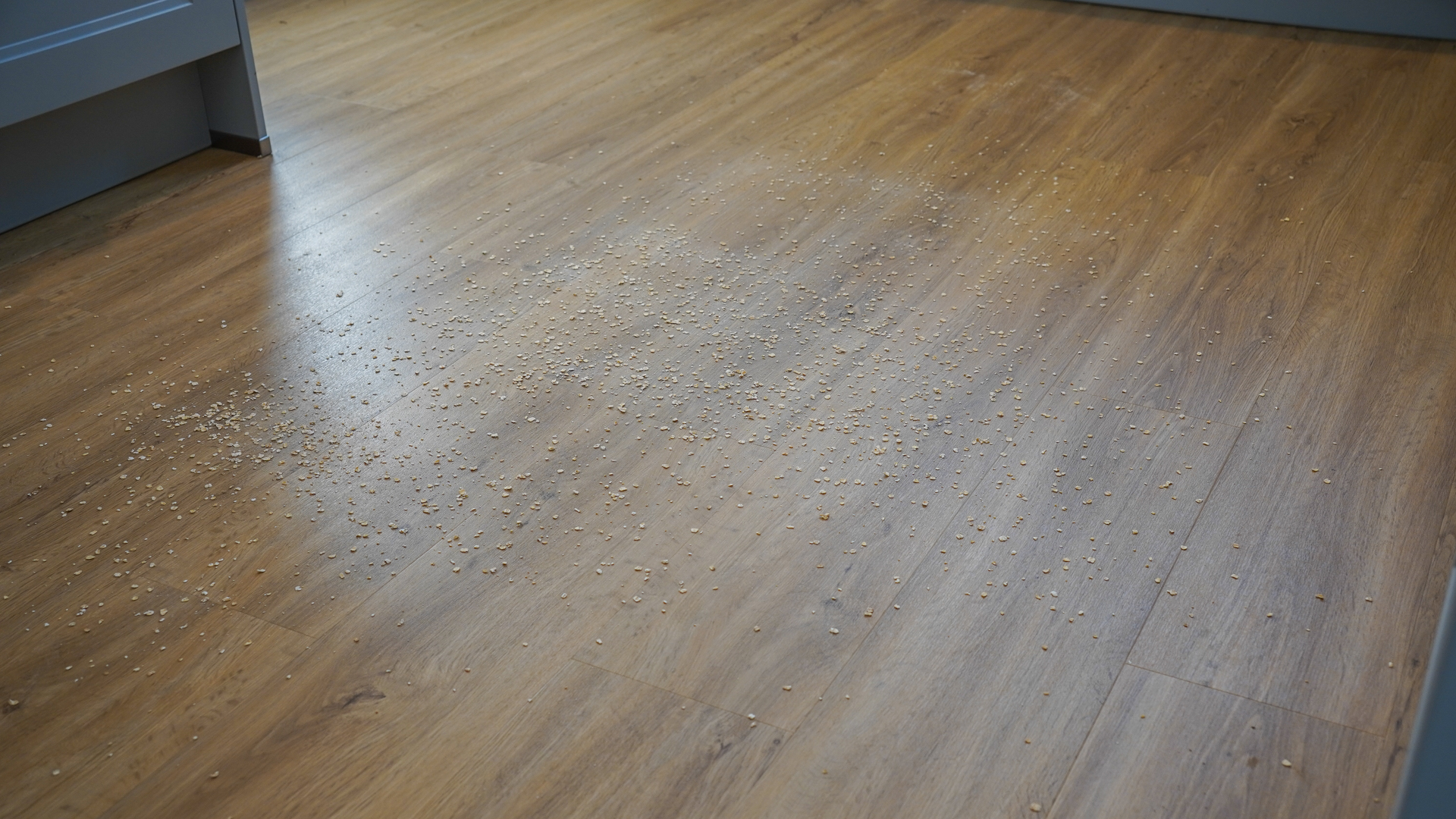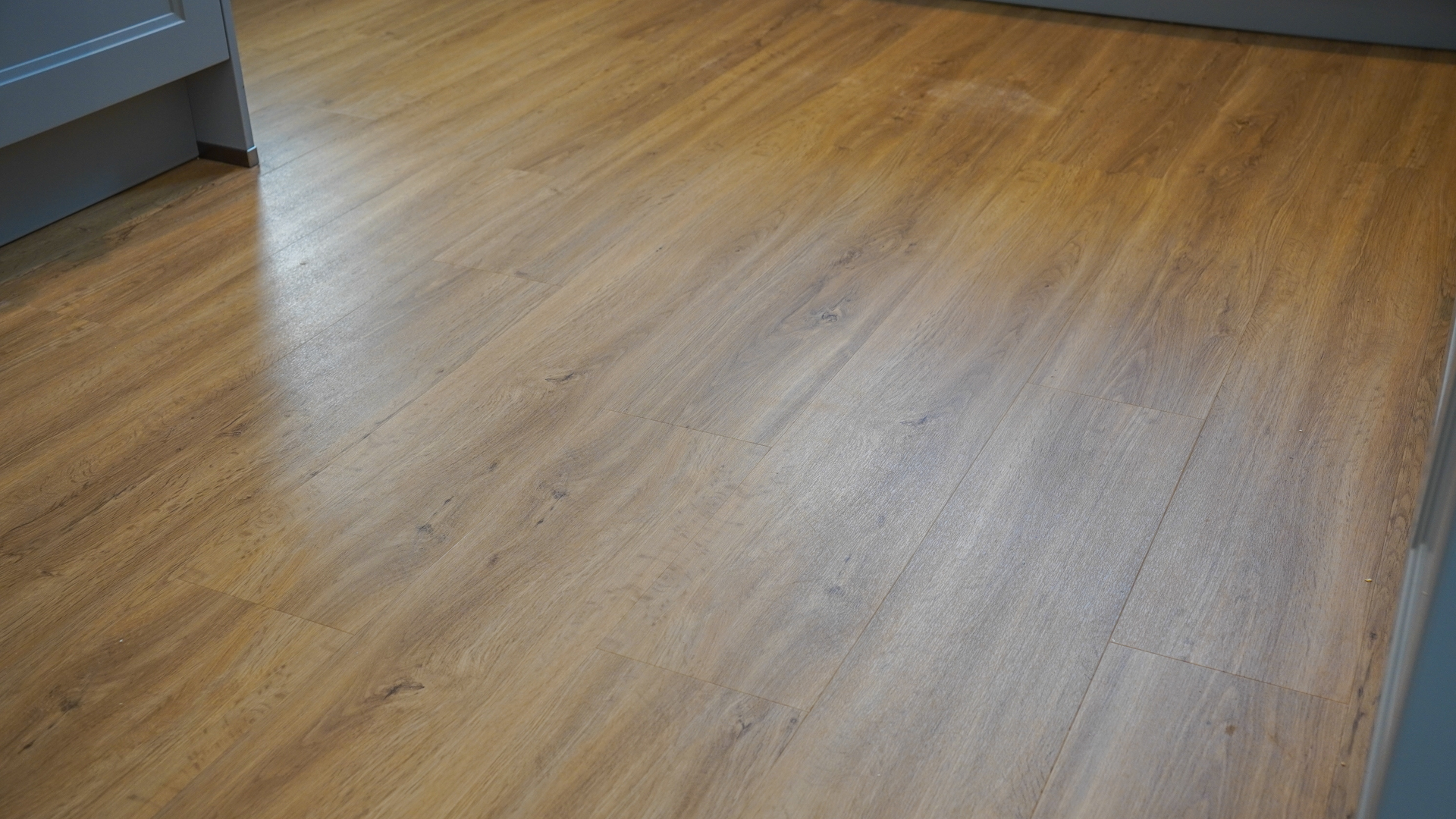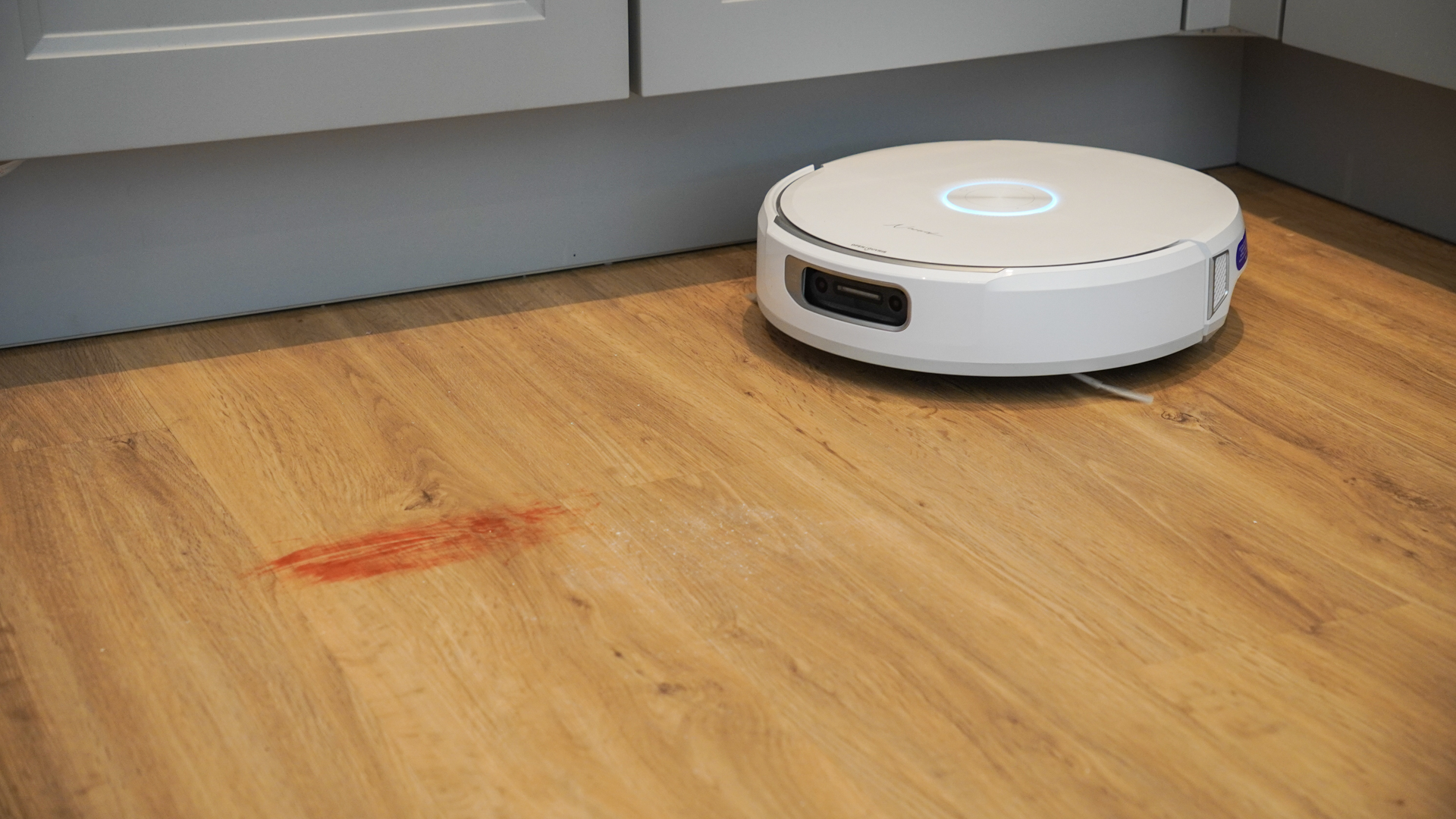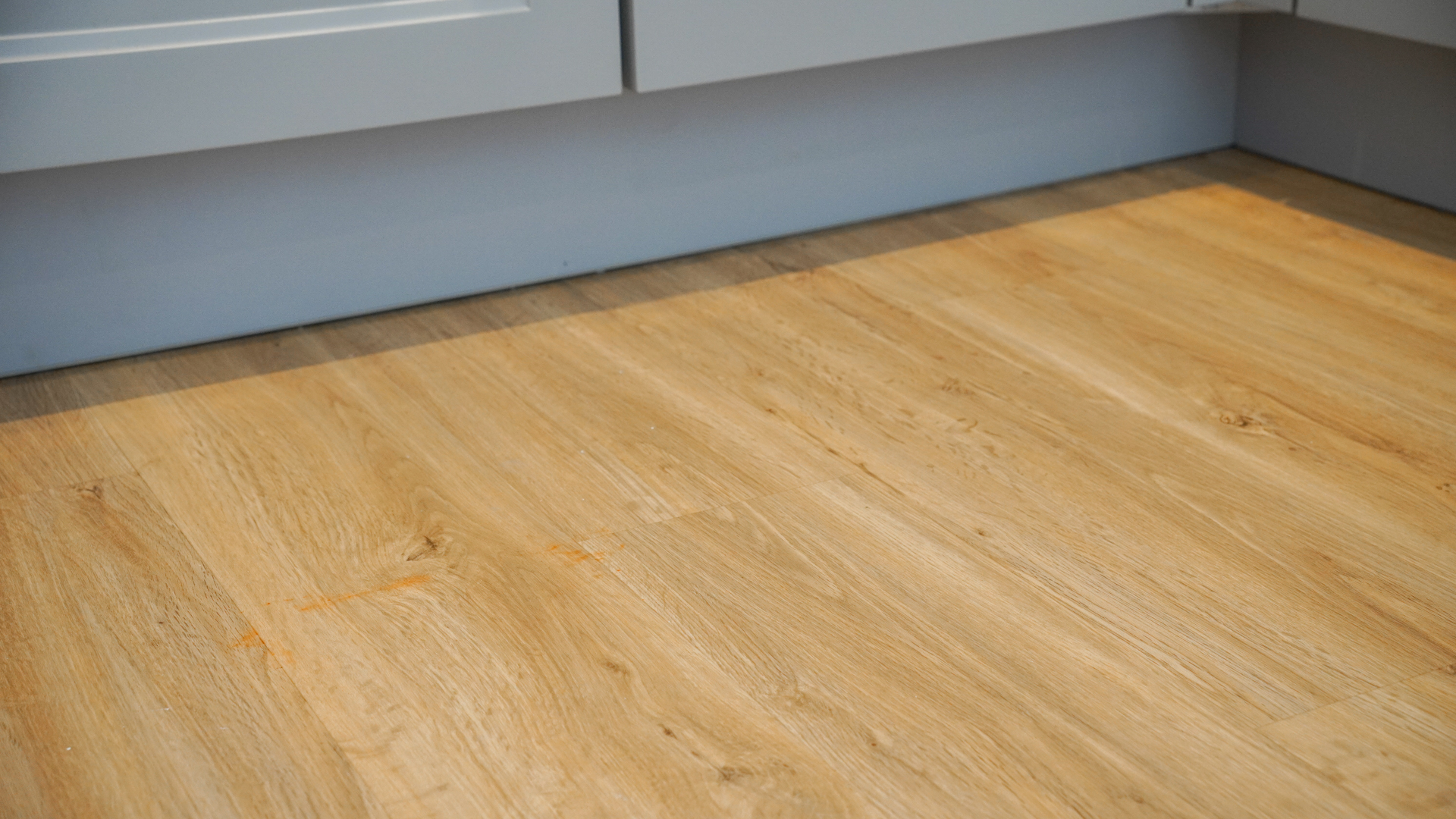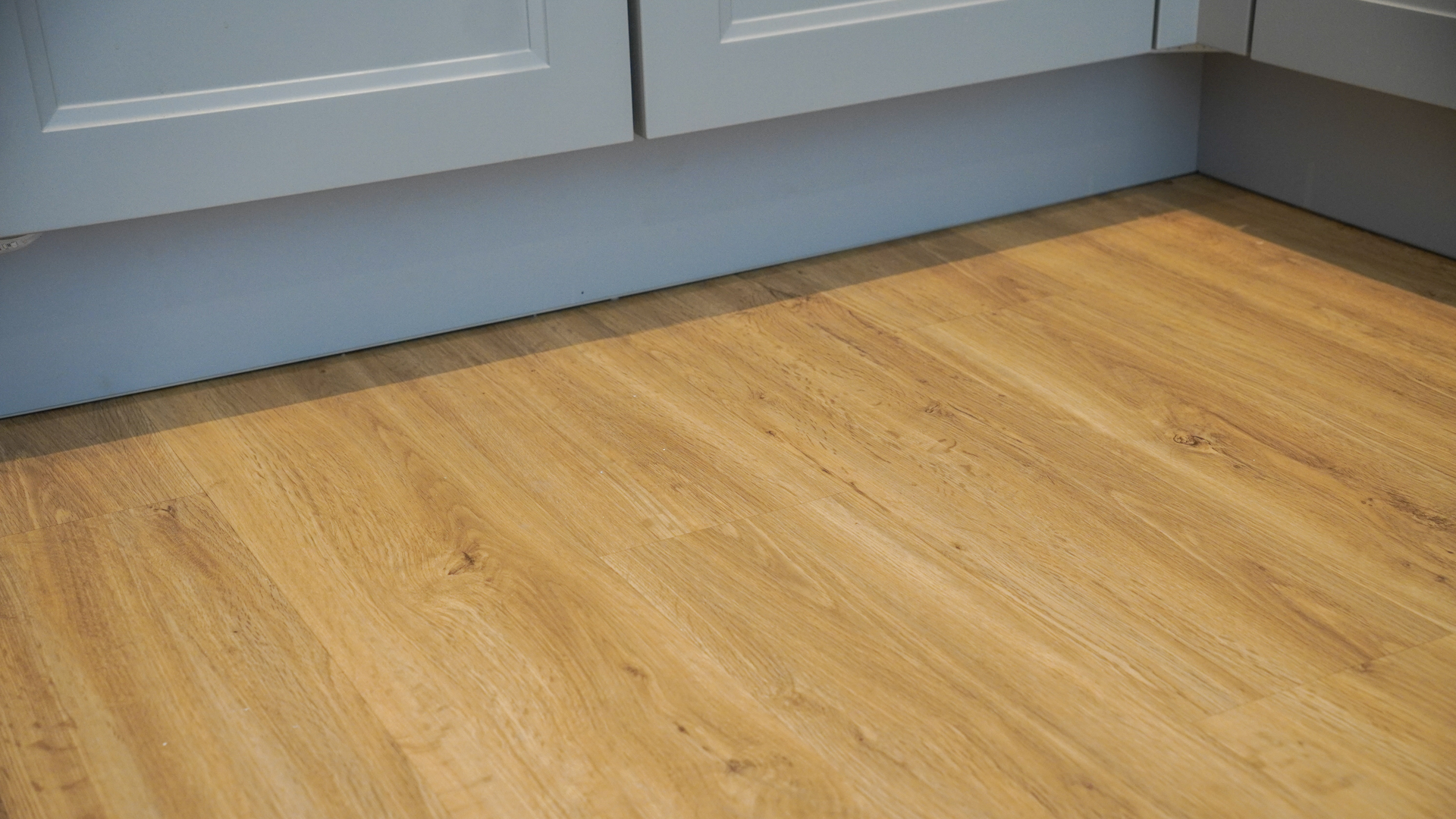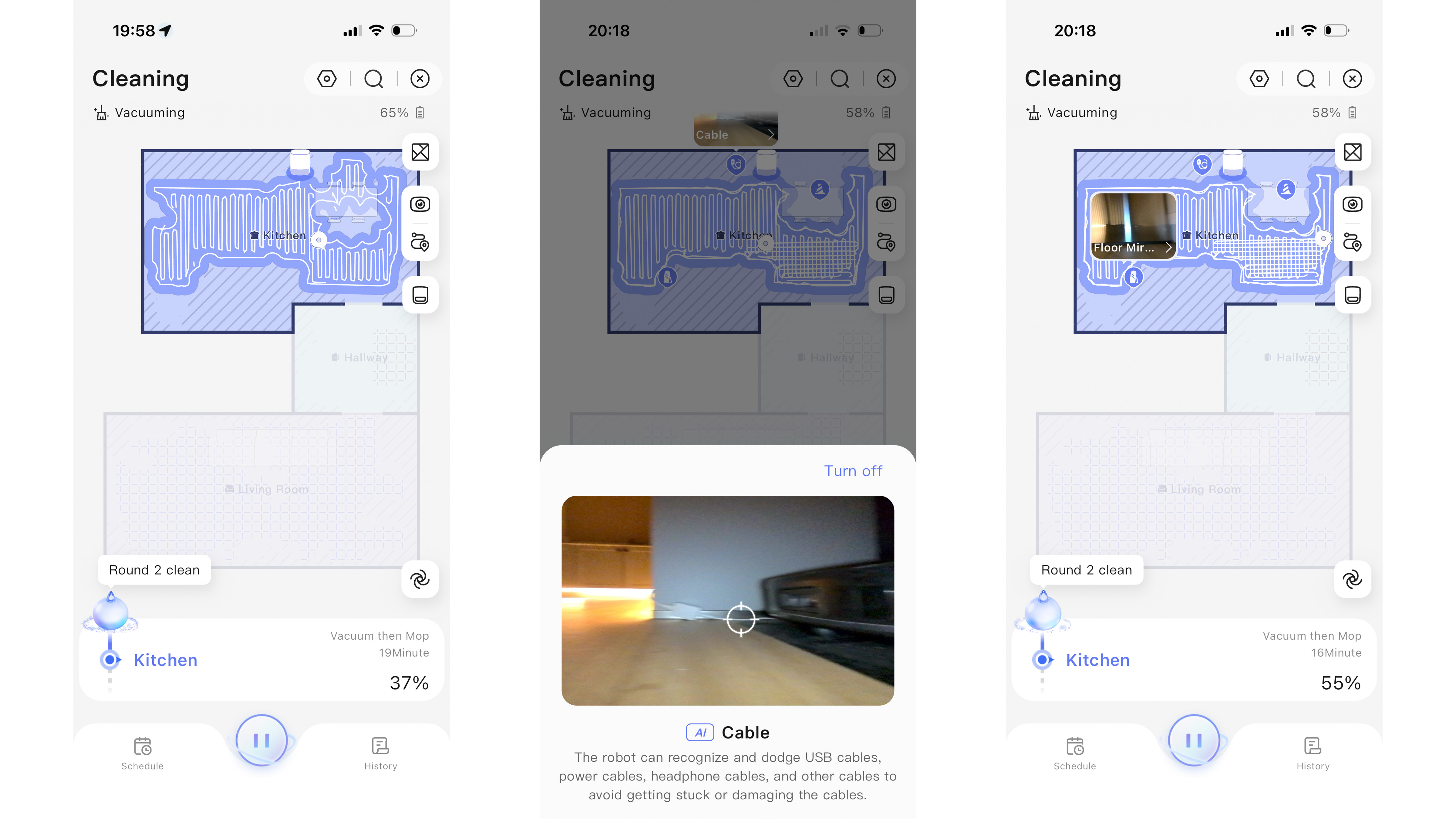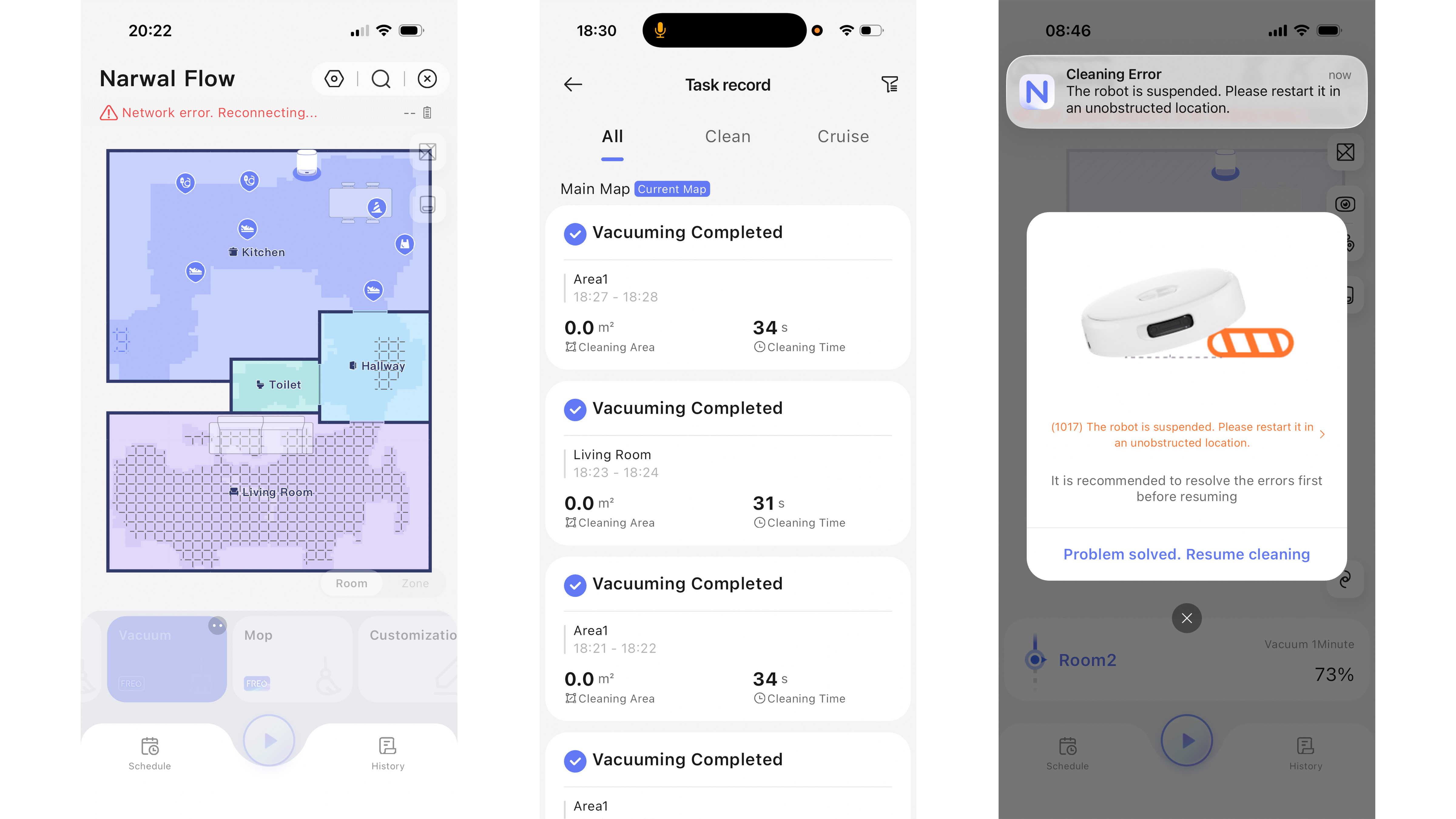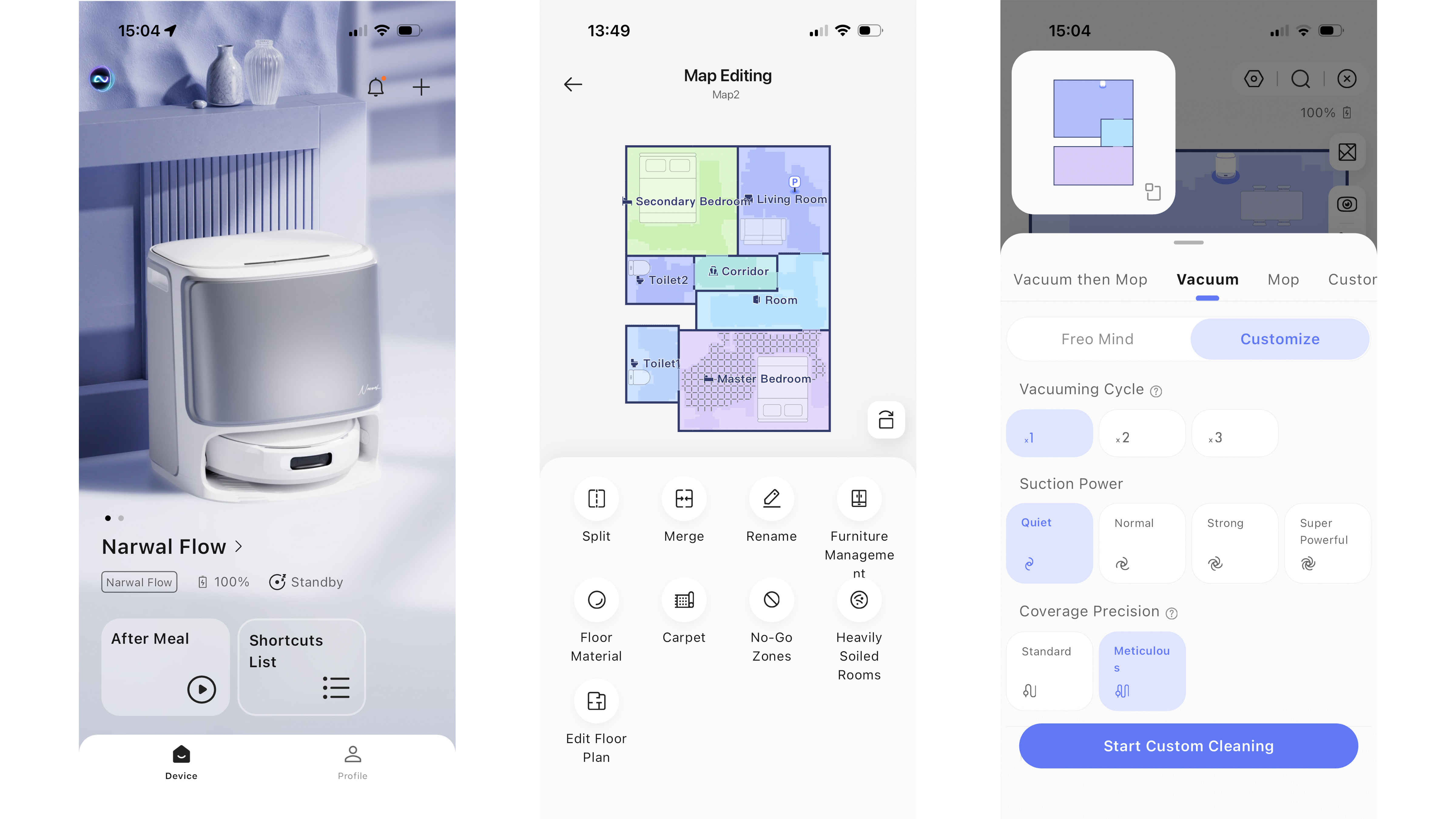Why you can trust TechRadar
We spend hours testing every product or service we review, so you can be sure you’re buying the best. Find out more about how we test.
Narwal Flow: two-minute review
The Narwal Flow is a high-end, self-emptying hybrid robotic vacuum with an especially unusual and impressive mopping system. I’ve been testing one out for the past fortnight, and the performance is such a mixed bag that coming to a definitive conclusion is tricky. On one hand, its mopping is among the best of any robovac I’ve tested. The mop pad is mounted on a wide roller, which extends outwards to reach into corners, and uses hot water to clean both your floor and itself. The system works remarkably well.
The Flow’s vacuuming abilities are also strong, and it performed very well in TechRadar’s standardized tests. It’s not only very powerful (up to 22,000 Pa of suction), but cleverly adjusts the speed of its rotating side brushes to prevent dry debris from being flung across hard floors. It also performed very well at in my obstacle avoidance tests. There don’t seem to have been any negative results of installing the LiDAR module in the back of the bot instead of in a raised puck on top. The benefit is that the overall profile is relatively shallow, which means the bot can clean beneath low furniture.
On the other hand, the Flow occasionally let itself down. During one cleaning task, it spilled a large amount of debris from its dust bin onto the floor, despite being set to automatically empty itself into the base station. The robot then drove over the mess, lifting itself off the ground enough to trigger its cliff sensors, and requiring help. Another time, it repeatedly failed to enter a room and, despite not vacuuming a single square centimeter, returned to its charger and declared the task a success.
The app is also so packed with adjustable settings that it’ll likely feel intimidating to robovac rookies – an issue compounded by numerous examples of poor translation. I have no doubt these issues can be addressed by software updates, and I was ultimately still very impressed by the Flow’s cleaning performance. The fundamentals are sound, it just needs a little finesse to reach perfection.
That’s the short version – read on for my full Narwal Flow review, including an in-depth look at the design, performance and value for money, plus how it compares to the rest of the best robot vacuums on the market.
Narwal Flow review: price & availability
- List price: $1,499.99
- Launched: August 2025
- Available: US
The Flow launched in August 2025, and a month later its price fell from $1,499.99 to $1,299.99. That’s for what Narwal calls the basic dock, which contains a dust bag and tanks for clean and dirty water. A smaller dock that plumbs into your water supply for a full hands-off experience costs $1,599.99, but was discounted by $200 during the pre-order phase.
Currently, the Narwal Flow is only available in the US. The brand hasn’t announced plans to bring the Flow to the UK just yet. However, it’s available in some European countries, including Germany, for €1,299 with the standard dock and €1,499 for the smaller, plumbed-in dock. Those prices were cut for a limited time at launch to €899 and €1,099 respectively. The Flow is not currently available in Australia.
Even at the new, lower list price, the Narwal Flow is firmly in the premium price bracket for robot vacuums. It sits above other high-end robovacs, like the $1,099 Ecovacs Deebot X8 Pro Omni, but below the lofty $1,599.99 recommended retail price of the Roborock Qrevo Curv. However, discounts are common in the robot vacuum market, so in many cases you’ll be able to take list price with a pinch of salt.
If you’re comfortable with the idea of a four-figure vacuum – something we’ve all had to get used to as their features and performance continue to grow – then the Flow feels like good value. This is especially true when you start digging through the spec sheet and the many, many pages of features and settings accessible in the app. Things like the use of hot water with the mopping system – to clean the floor, not just the pad itself – and an extending, track-based mop help the Flow stand apart. I’ll come back to these features in more detail later.
Like other robotic vacuums, the Flow will require replacement parts over time. Examples include dust bags and detergent for the mopping water, and the spinning side brushes can also be replaced if they wear out or break. Narwal sells a kit of parts that includes two mops, two filters, a replacement roller brush, three dust bags, two bottles of detergent, two pairs of side brushes and other accessories. But it’s rather expensive, at $259.99.
- Value for money score: 4 out of 5
Narwal Flow specs
|
Max suction: |
22,000Pa |
|
Robot diameter: |
13.8in / 35.1cm |
|
Robot height: |
3.7in / 9.5cm |
|
Dock dimensions (W x D x H): |
16.9 x 15.6 x 18.2in / 43 x 40 x 46.1cm |
|
Dust bin volume (base): |
2.5L |
|
Water tank volume: |
Requested |
|
Base type: |
Charge, auto-empty, wash mop pads with hot water, dry mop pads with hot air, refill clean water, self-clean |
|
Max threshold clearance: |
1.6in / 4cm |
|
Mop type: |
Roller track with hot water mopping |
|
Mop pad lifting: |
0.5in / 1.2cm |
|
Max runtime: |
190 mins |
Narwal Flow review: design
- Hybrid robot vacuum with LiDAR integrated to give a shallower profile
- Track-style roller mop that can extend, with hot water mopping
- Comprehensive dock with hot water mop cleaning and self-clean cycle
The Narwal Flow is a robotic vacuum cleaner and mop with a self-emptying charge station that also cleans and drys the integrated mop. As well as emptying the robot’s onboard dust bin, the charge station empties the robot’s dirty water tank and refills it with clean water. For an even more hands-off approach, there’s an option that has a dock that can be plumbed in (I didn’t test this version).
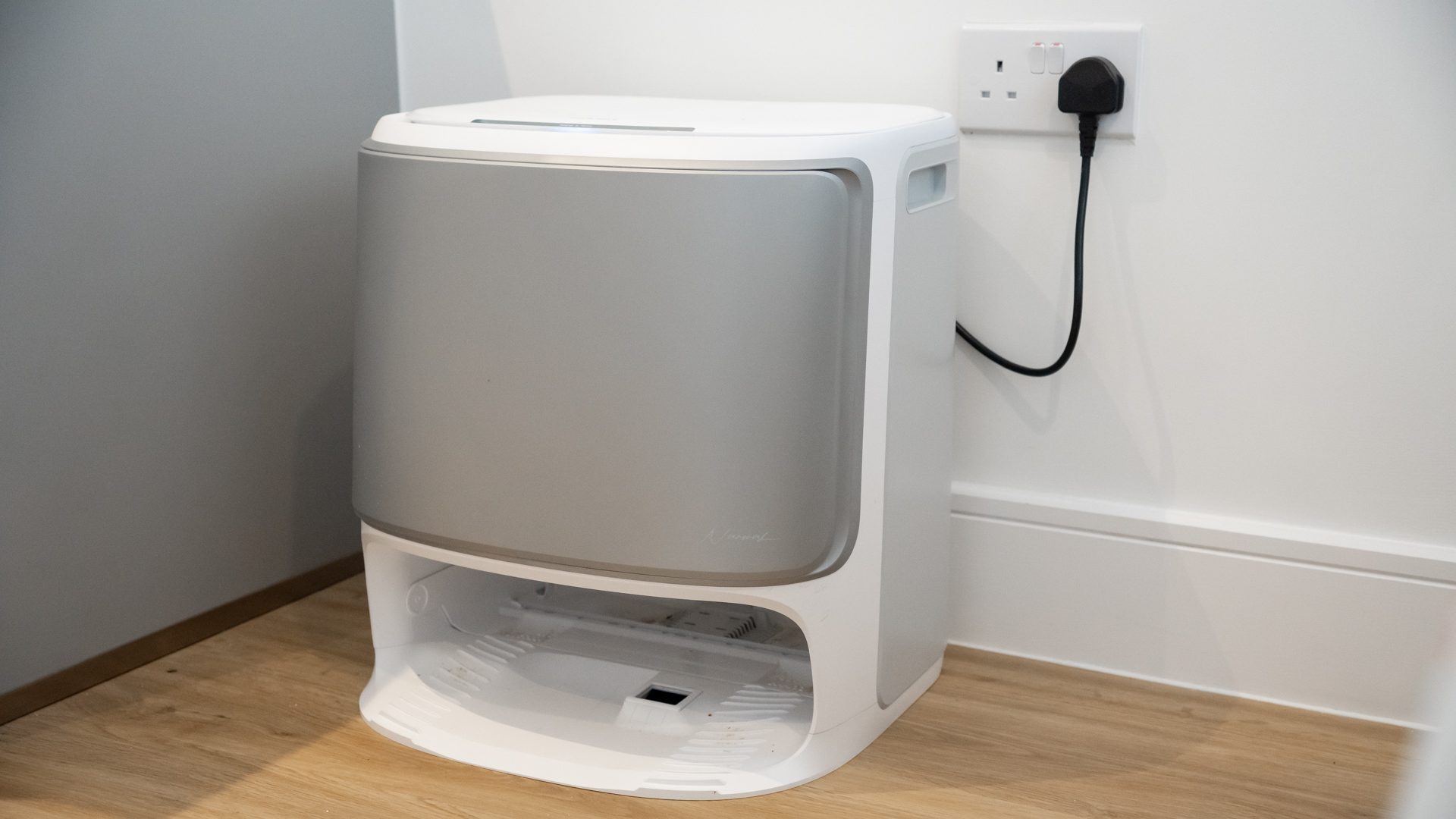
The standard base station is comprehensive. It’ll take care of basic things like charging the bot and emptying the dust, but also tasks like refilling the onboard water tank, washing the mop pads with hot water and drying them with hot air. It’ll even clean itself, rinsing the dirty water tank and pipes with hot water. It’s a shame, then, that there’s no automatic detergent dispenser; instead you just add cleaning solution to the clean water tank.
I like how the robot is housed almost entirely inside the charge station, instead of protruding out the front when parked. This makes for a neater appearance, and means the system takes up less floor space than some rivals.
As with other robovacs, the Flow asks for plenty of free floor space around the base station, though. Officially, you should keep 18 in / 45cm free to each side and in front of the dock. This isn’t critical though, so you can put the dock in a corner of the room (or next to a kitchen cupboard, as I have) and the robot will still drive in and out just fine.
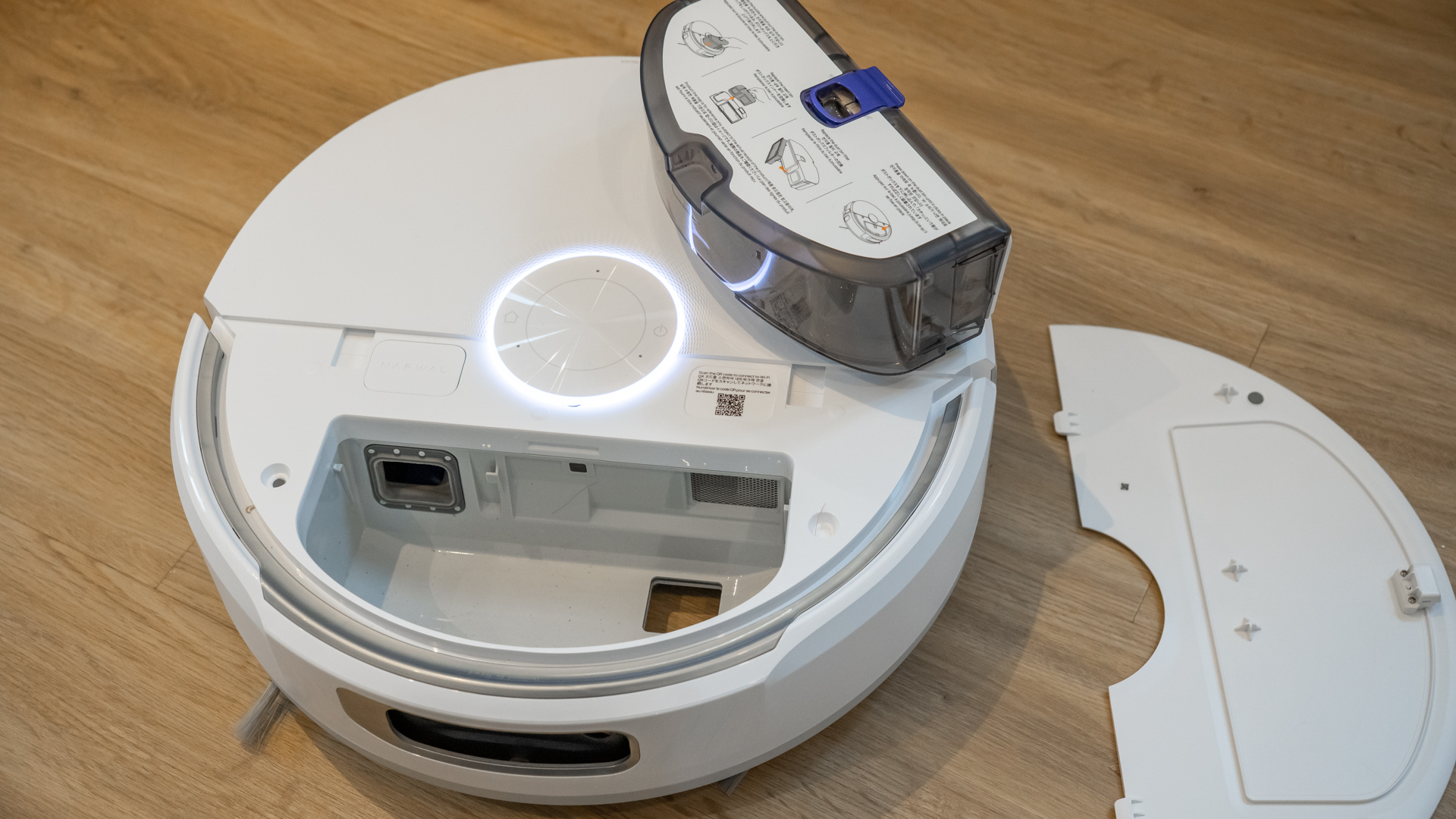
The underside of the robot houses a rotating, anti-tangle brush, a pair of spinning side brushes, two wheels that promise to lift the robot over thresholds up to 1.57 in / 4cm tall, and a reusable mopping pad.
Unlike some other robotic vacuums, the Flow’s spinning LiDAR unit is housed within the body instead of mounted on top, which reduces its height to 3.74 in / 9.5 cm, which is on the shallower side for a robot vacuum and means it’s able to drive beneath low furniture.
When in use, the mop pushes down onto the floor with a force of 2.7 lbs / 1.22 kg to help it scrub at dirt and dried-on stains, while grime is scraped off, and the pad is fed with clean water. The mop uses water warmed to 113F / 45C while in use, then lifts by 0.47in / 1.2cm to keep clear of carpet and rugs.
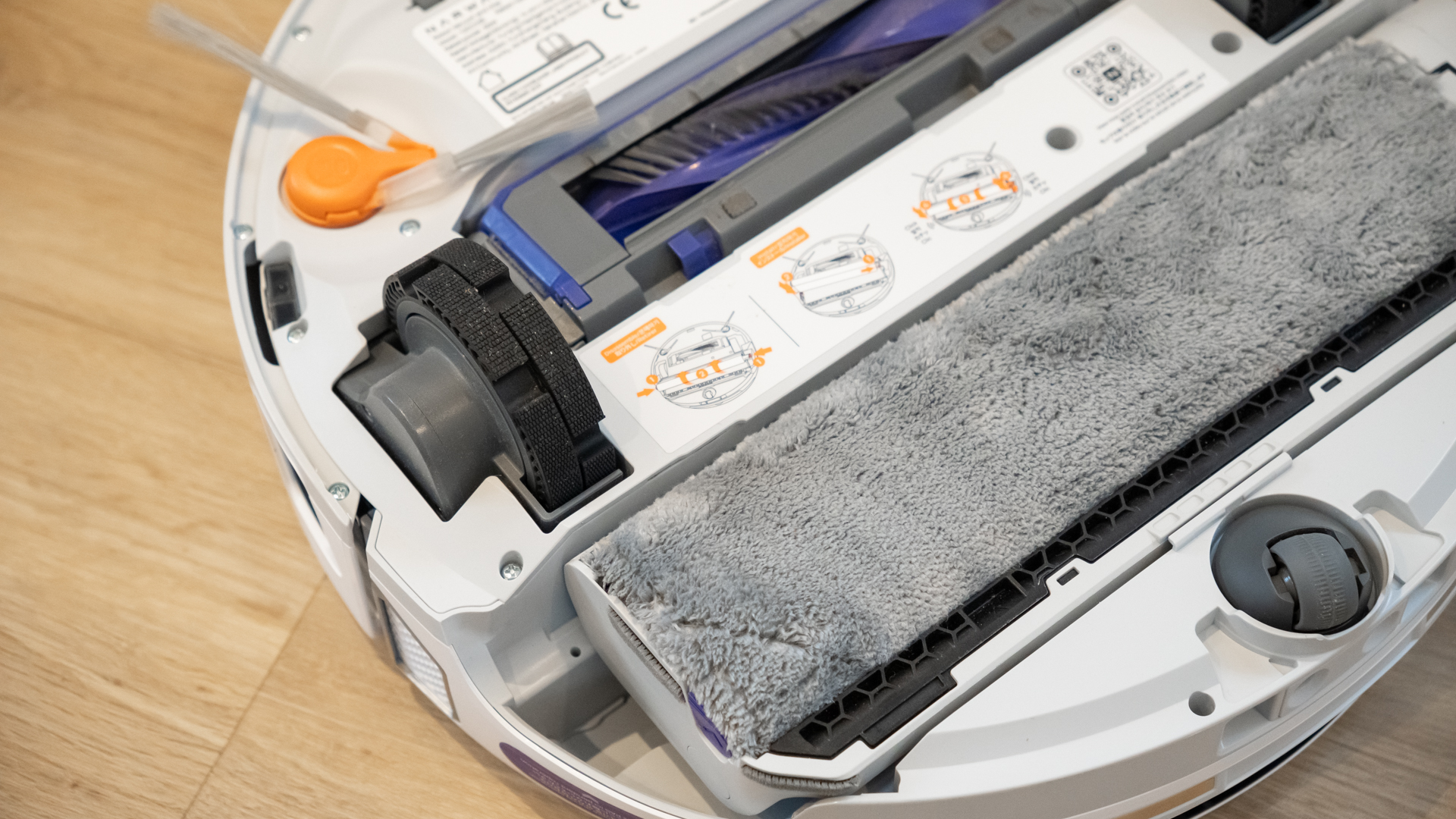
Unlike some other robotic vacuums, the rotating side brushes of the Narwal Flow do not pivot outwards to reach further into corners. Instead, there’s a clever mechanical solution: one brush on each sweeper has a hinge halfway up. When the bot approaches the edge of a room, the sweeper changes direction of rotation, causing the hinge to open up and extend the reach of the brush.
The mop does extend outwards, getting it closer to walls but not quite within touching distance.
Setup
Setting up the Narwal Flow is relatively quick and easy. The spinning brushes clip into place, then it’s just a case of picking a good spot for the charging station, filling the water tank, letting the robot charge its battery, and using the Narwal app to connect the robot to your Wi-Fi network. After that, you’re prompted to send the Flow out on a mapping mission, where it quickly drives around, without cleaning, and uses its vision system to map your property.
The Flow performed this quickly and did a decent job of splitting the floor plan into rooms. It even correctly labeled the kitchen and living room, spotted how the latter is carpeted, and placed icons to represent a dining table, chairs and sofa. I had to adjust some of the wall locations, then split the hallway and downstairs toilet into two rooms, but this process is all quite intuitive.
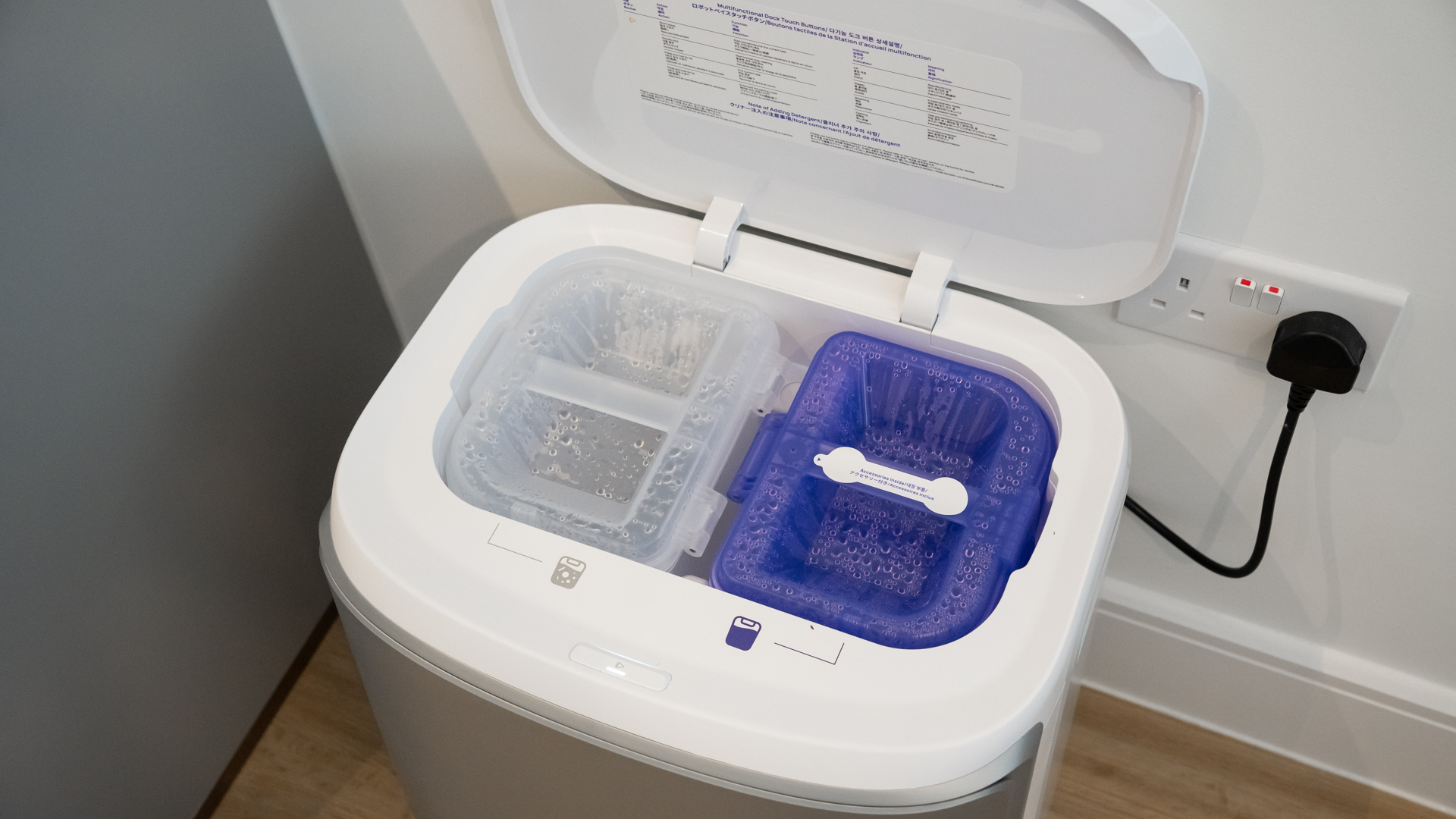
The Flow also spotted a couple of obstacles – a cable and some shoes – and marked them with relevant icons on the floor map. Narwal says the Flow can recognize 200 different types of objects this way – and yes, that includes pet mess. This system was inconsistent, as it later mistook a stainless steel kitchen bin for a mirror and labelled a single table leg as ‘other’ despite previously adding the same table and chairs to its map of the kitchen. Up to four maps can be saved, which is handy if you live in a multi-storey house instead of an apartment.
Lastly, the Flow offers smart home integration and support for voice commands via Siri, Alexa and Google Home. However, there’s a bit of clunky Chinese-to-English translation going on here, which can make some settings nonsensical. That aside, I like being able to ask Alexa to ‘clean the kitchen’, for example, or set up a Siri Shortcut to control the Flow.
- Design score: 4.5 out of 5
Narwal Flow review: performance
- Strong vacuuming and excellent mopping when you get the settings right
- Occasional navigation failures
- Impressively thorough self-cleaning from the dock
Narwal suggests the Flow is best left to think for itself. This is because, while there’s lots of granular customization of cleaning schedules and mopping strategies to sink your teeth into, Narwal’s artificial intelligence, called Freo Mind, can be summoned to do the thinking for you.
The AI adjusts the cleaning strategy based on the room and how much dirt there is. It’ll adjust the suction power, mopping water usage, cleaning frequency and other variables on the fly, and work especially hard on tougher stains.
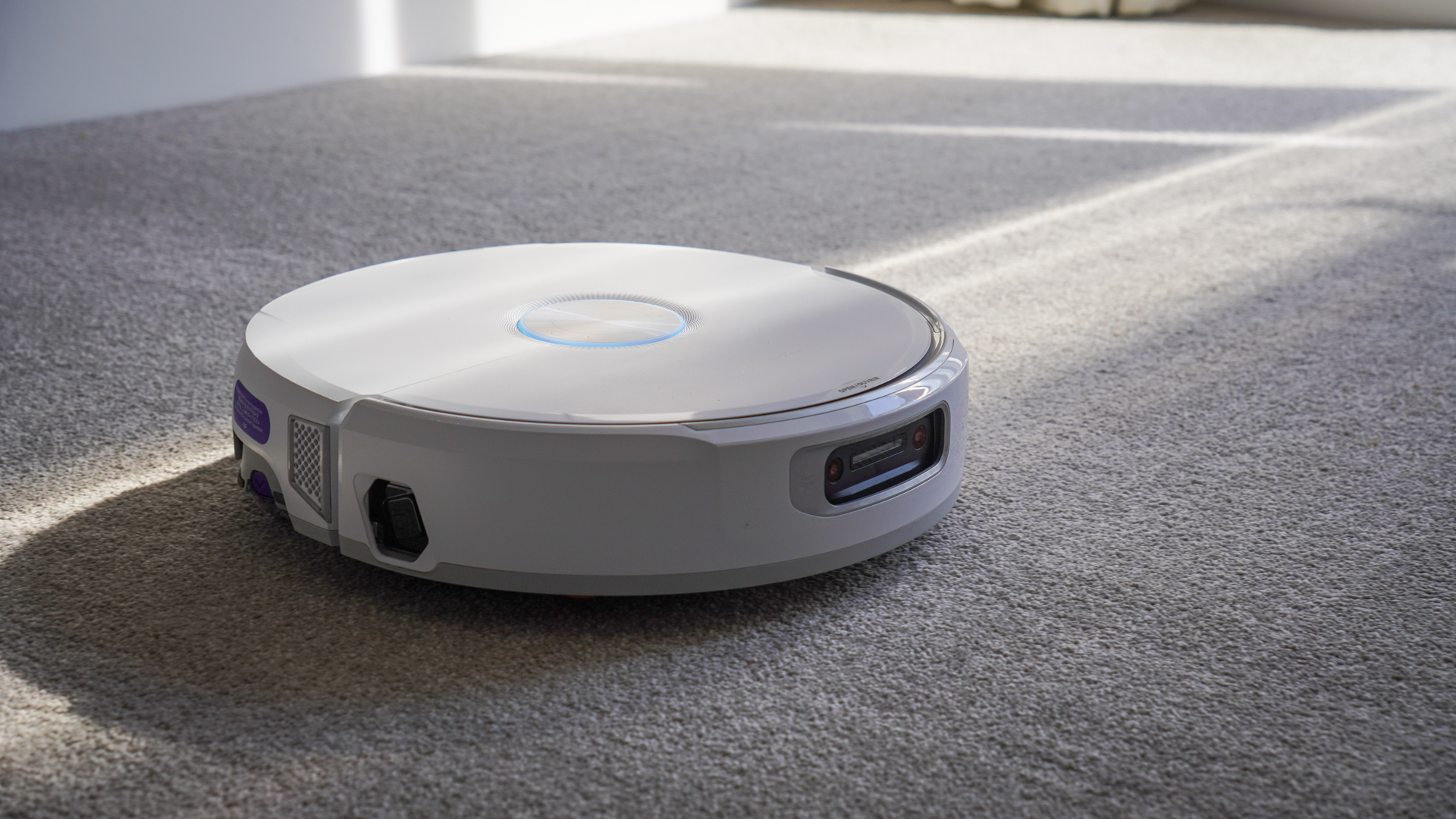
This is most obvious when tasked with mopping dried-on stains, which the robot will scrub at repeatedly, sometimes with multiple trips back to the docking station to clean the mop and grab more warm water, before the job is done.
The Flow’s intelligence and navigation skills are mostly good, driving very close to walls but rarely crashing into them, and cleaning in neat, straight lines.
But it isn’t perfect. On one occasion the Flow pushed a chair about 12in / 30.5cm across the kitchen floor, then seemingly got stuck, unsure of where to go or how to get back to its charger. I was also disappointed to see how the Flow once dropped a large amount of debris onto the carpet after cleaning, and another onto its own dock when returning to base. The robot can be set to empty its bin either after every clean, or intelligently based on how full it is, but in neither scenario should the bin be overflowing. Those minor hiccups aside, during general use I found the Flow to clean very well indeed.
Vacuuming tests
Now for the specific cleaning tests. I started by challenging the Narwal with a mixture of crushed digestive biscuit and flour on a wooden floor. I set the robot to its lowest suction setting and asked it to vacuum the area just once, and with what the app refers to as ‘standard coverage precision’, instead of the more meticulous option.
I started on the lowest of four suction settings (this is called ‘Quiet, and lives up to its name, reaching just 58 dB.) Most of the debris was collected after a single pass. But, while the Flow managed not to flick dirt around the room, as some other robovacs are guilty of, larger pieces of food were missed, and there’s no doubt I could have done a better job with a handheld vacuum or a dustpan and brush. The bot then returned to its dock and disinfected the internal bin. I measured this process at 42 dB; noticeable in a quiet room, but only slightly louder than a refrigerator.
I repeated the test at the next suction level, called Normal. This picked up more debris, but still left some behind – and I also noticed how the robot left two sizable trails of crumbs at the entrance to its charging dock. I then selected the highest setting, called Super Powerful, but before starting the app suggested I try ‘Vortex suction power’, which was previously hidden but, the app said, was suitable for the current area I was cleaning. Vortex suction is much louder, at 76 dB, but did an excellent job, picking up almost all of the crumb mix and leaving behind only a few faint trails.
As a final test, I scattered some more of the crumb mix and this time selected the Narwal Flow’s Freo Mind setting, which promises to intelligently adjust depending on the environment and dirt level.
The robot drove in a more meticulous way, but left quite a few patches of crumb in its wake, plus some trails of debris spread around by its tank tracks. Honestly, I was expecting a little better here. As is almost always the case with robovacs, the best approach is to have it vacuum the entire room twice, rather than focus on a single area from which it is likely to flick dirt. This approach produced the best results.
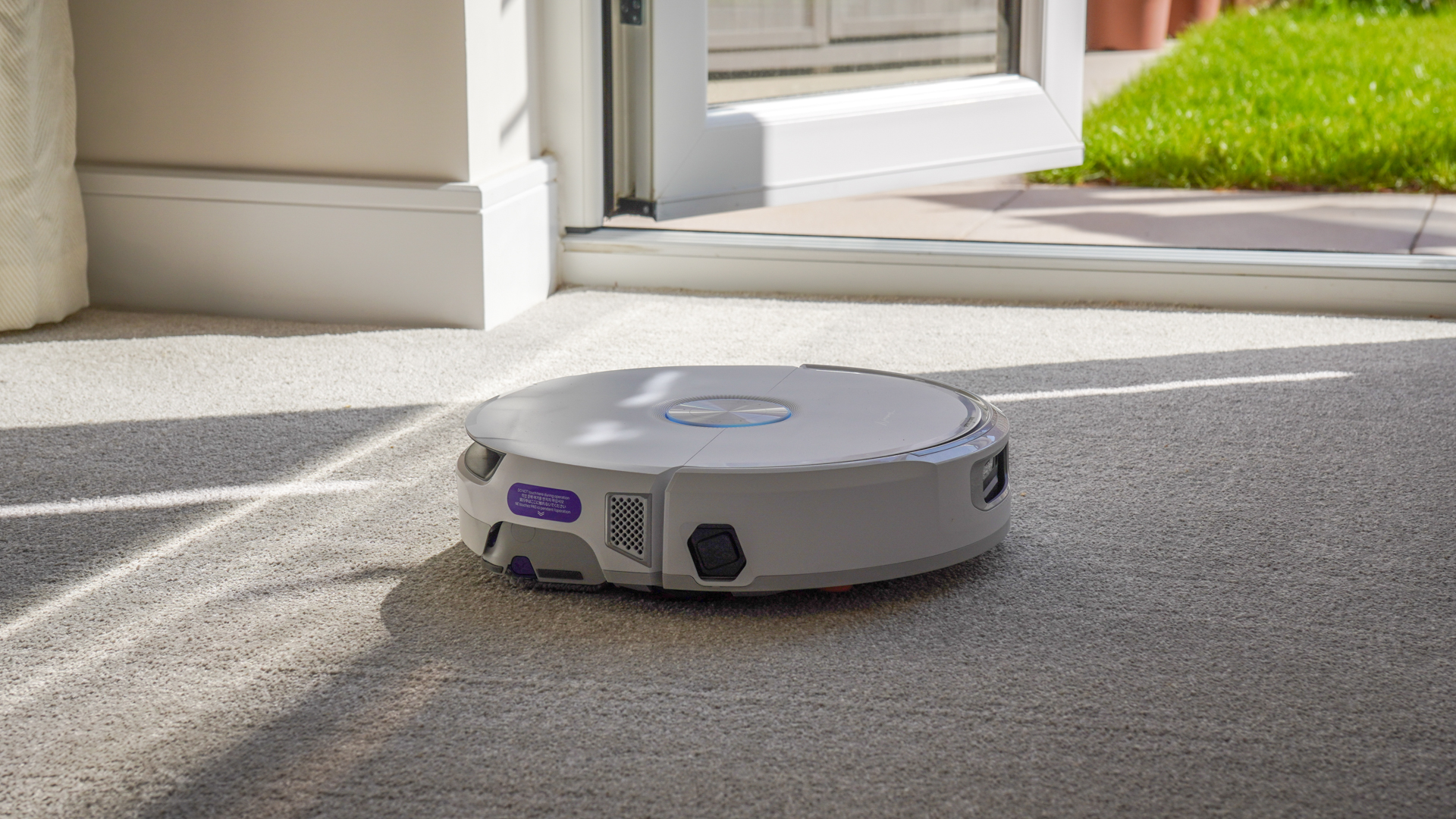
Next, I repeated this test in a carpeted lounge. Strangely, the robot repeatedly failed to even leave the kitchen, yet twice proudly told me it had completed the task (and stated how it had cleaned 0.0 square meters in the app).
After the third failure, I asked it to vacuum the entire lounge instead of a custom zone. This also failed, and – after deleting the map and creating a new one – I discovered the Flow had designated the lounge carpet as an area to ‘Cross’ instead of ‘Clean’. This is intended for rugs, creating the option to avoid them, but in this case it meant the robot refused to enter the room. A notification explaining this would have been helpful.
Issue resolved, and even the lowest suction mode did a fantastic job of vacuuming the carpet, with only very small patches of the crumb mix left behind. It was an impressive performance, and I liked how, even in ‘standard’ coverage precision, the Flow methodically drove twice across the selected zone. I repeated the task using Normal suction with two vacuuming cycles, and the carpet was cleaned perfectly.
For my next test, I used oats to see how the Flow performed with larger debris. On a hard floor it passed with flying colors, even with the lowest suction level. Crucial here is how the Flow’s rotating side brushes vary their speed depending on the task, so instead of flicking the oats around – as many other robovacs do – the Flow slowed down and picked up almost everything.
On carpet I saw similarly impressive results, with just a single pass on the lowest suction enough to leave the floor totally spotless.
Mopping tests
Next, the mop test. For this I tested the Flow with some spilt water, then a few drops of ketchup smeared across a wooden floor and left to dry. For every mopping task, the bot first cleans its mop with hot water inside the base station, then sets off. The Flow did a great job of wiping away the spilt water, without pushing it around and creating more mess, but the rotating side brushes are dragged through the liquid (and, later, the ketchup too), so could start to smell over time.
The Flow’s Freo AI function didn’t scrub at the ketchup as much as I’d hoped, and instead returned to base after one pass without properly cleaning the area.
I tried again – this time with the mopping set to ‘meticulous’ and with increased water usage to help loosen and remove the ketchup stain – and the floor was left spotless. Worth noting is how the Flow comes with a bottle of detergent, but this is added manually to the base station water tank, instead of being administered automatically, via a separate tank, as is the case with some premium robovacs.
Especially impressive is how the mop uses hot water to clean the floor, then is itself washed with more hot water and dried inside the base station after every task. Remarkably, even after a few weeks’ use and the ketchup test, the mopping pad still looked like new.
Obstacle avoidance tests
Finally, obstacle avoidance. I tasked the Flow with vacuuming my lounge and placed a shoe, a sock and a USB charge cable in its way. The robot did an excellent job of avoiding every object, while still vacuuming very closely to each of them.
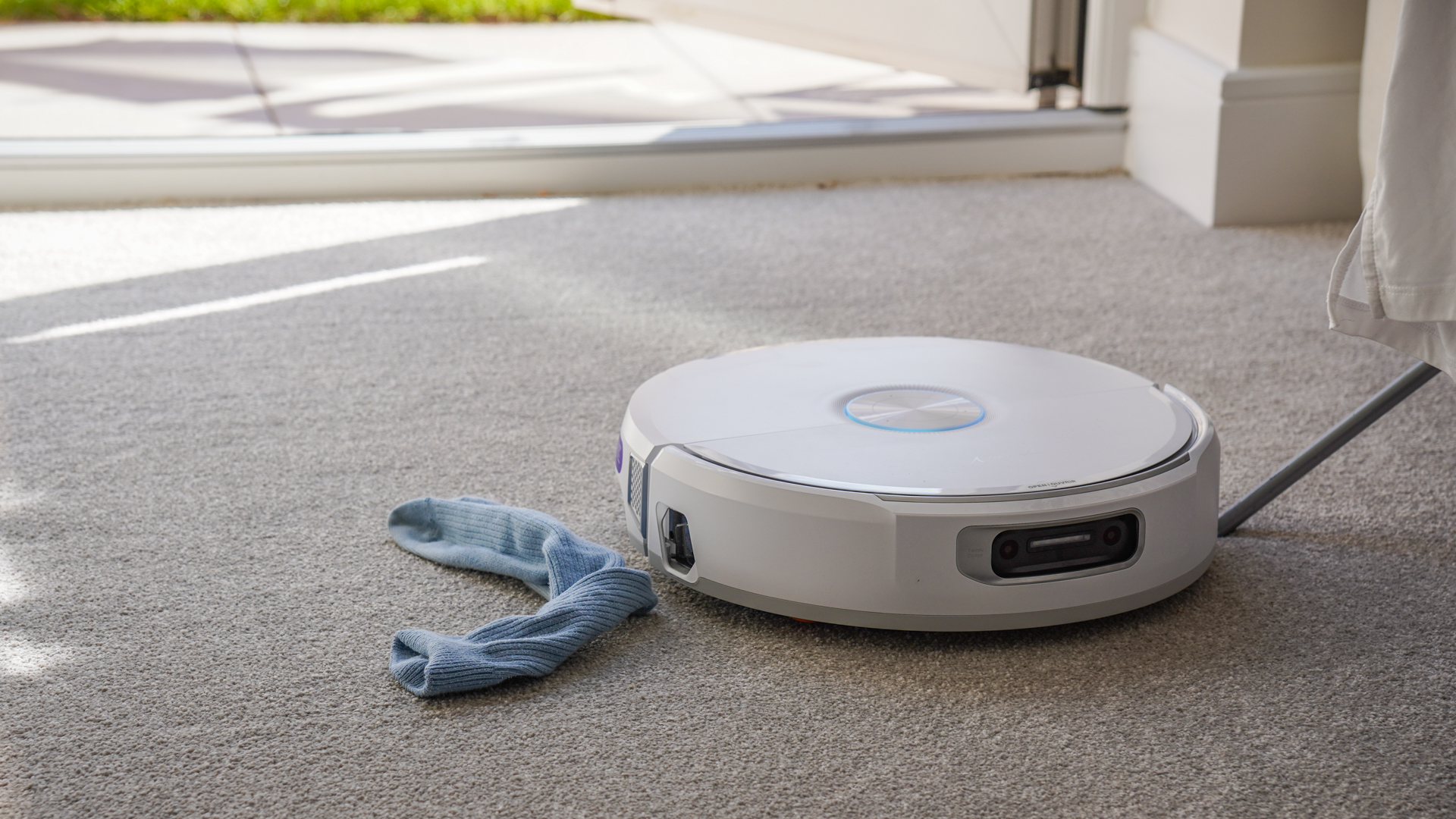
I was particularly impressed by how it dodged the charge cable, since most robovacs fail at this test. The app showed an icon of a cable on the map, but strangely didn’t identify the sock and shoe.
- Performance score: 4 out of 5
Narwal Flow review: app
- Some poor Chinese-to-English translations
- A ton of settings to explore – in fact, an overwhelming number
- Drains phone battery quickly when left open
The Narwal app is a complex beast, packed with adjustable features and settings. It’s designed nicely though, and most of the menu system is logical enough, although some questionable translation into English will have you scratching your head.
Ideally, you’d leave the Freo Mind AI to work everything out for you. But I found the Flow vacuumed best when configured to perform two cycles with strong suction and the coverage precision set to meticulous. Mopping worked best when set to two cycles, with normal water usage and, again, the meticulous coverage mode.
Beyond that, there are pages and pages of settings to read through and tinker with. There’s even a setting to increase suction power to compensate for living at high altitude, a graph to show the ‘health index’ of the dust bag over time, and three options for how intensely the mop is dried. A ‘simple mode’ that strips out most features would be welcome.
More helpfully, you can create and save up to four maps, so using the Flow across multiple floors is possible, and there’s a page showing you when each consumable accessory will need replacing.
One of the app’s best features is how shortcuts can be created for common cleaning tasks. I made one called After Meal, which is configured to vacuum the entire kitchen with normal suction and two passes. These shortcuts live on the home page of the app, and begin with a single tap.
It’s a good app, but there’s too much going on for the average user. I’d urge most buyers to take manual control of the various cleaning functions, see what works best in your home, then set up a handful of shortcuts to fit your use case. I prefer this approach to relying on the Freo AI and trusting the robot to always do the right thing. Lastly, I noticed the Narwal app runs quite hot and quickly depleted my iPhone battery when left open.
Should you buy the Narwal Flow?
|
Attribute |
Notes |
Rating |
|---|---|---|
|
Value |
Expensive, but justified at least in part by an extensive feature list and generally very strong performance. |
4/5 |
|
Design |
Hybrid robot vacuum and mop with integrated LiDAR and extending, track-style roller mop. Comprehensive dock. |
4.5/5 |
|
Performance |
Vacuuming is strong, mopping excellent, and the dock’s cleaning functions are impressively thorough. Let down by occasional bugs and navigation issues. |
3.5/5 |
|
App |
Nicely designed, but overflowing with far too many features and settings and some poor translation into English. A resource hog that makes your phone run hot. |
3.5/5 |
Buy it if…
Don’t buy it if…
How I tested the Narwal Flow
I set up the Narwal Flow and used it as my own vacuum cleaner and mop for a couple of weeks, before conducting a series of specific tests. During the initial period, the Flow was tasked with vacuuming and mopping the entire ground floor of my home. I experimented with the Flow’s ability to create additional maps, and used it to clean my first floor bedrooms and bathrooms too. The specific vacuuming, mopping, navigation and obstacle avoidance tests are outlined in the Performance section above.
Read more about how we test robot vacuum cleaners
- First reviewed September 2025

